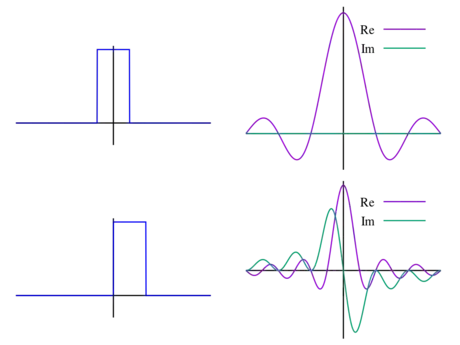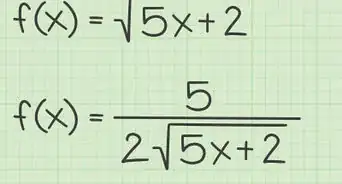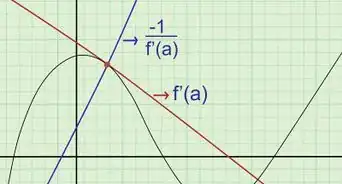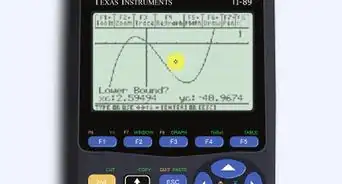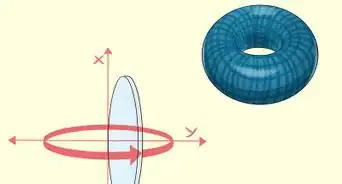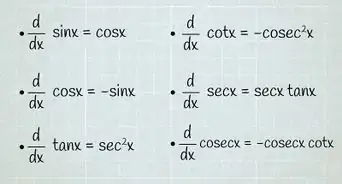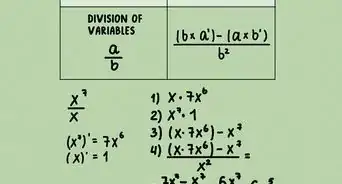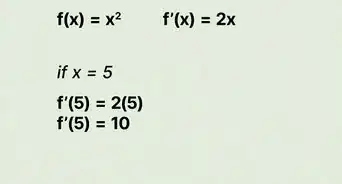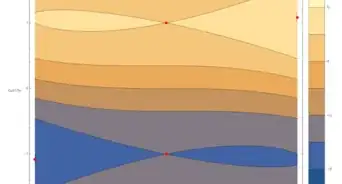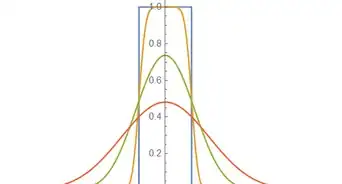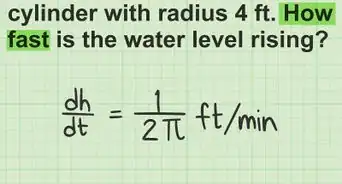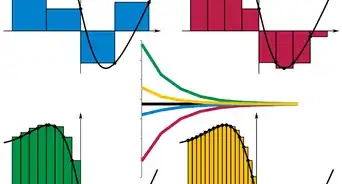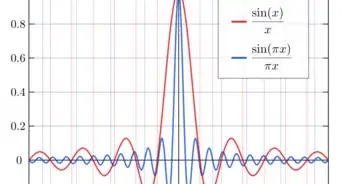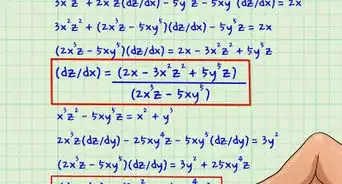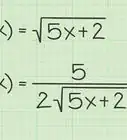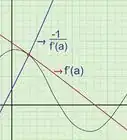wikiHow is a “wiki,” similar to Wikipedia, which means that many of our articles are co-written by multiple authors. To create this article, 17 people, some anonymous, worked to edit and improve it over time.
There are 14 references cited in this article, which can be found at the bottom of the page.
This article has been viewed 166,771 times.
Learn more...
The Fourier transform is an integral transform widely used in physics and engineering. They are widely used in signal analysis and are well-equipped to solve certain partial differential equations.
The convergence criteria of the Fourier transform (namely, that the function be absolutely integrable on the real line) are quite severe due to the lack of the exponential decay term as seen in the Laplace transform, and it means that functions like polynomials, exponentials, and trigonometric functions all do not have Fourier transforms in the usual sense. However, we can make use of the Dirac delta function to assign these functions Fourier transforms in a way that makes sense.
Because even the simplest functions that are encountered may need this type of treatment, it is recommended that you be familiar with the properties of the Laplace transform before moving on. Furthermore, it is more instructive to begin with the properties of the Fourier transform before moving on to more concrete examples.
Preliminaries
- We define the Fourier transform of as the following function, provided the integral converges.[1]
- The inverse Fourier transform is defined in a similar manner. Notice the symmetry present between the Fourier transform and its inverse, a symmetry that is not present in the Laplace transform.[2]
- There are many other definitions of the Fourier transform. The above definition making use of angular frequency is one of them, and we will use this convention in this article. See the tips for two other commonly used definitions.
- The Fourier transform and its inverse are linear operators, and therefore they both obey superposition and proportionality.[3]
Steps
Properties of the Fourier Transform
-
1Determine the Fourier transform of a derivative. A simple integration by parts, coupled with the observation that must vanish at both infinities, yields the answer below.[4]
- In general, we can take derivatives.
- This yields the interesting property, stated below, which may be familiar in quantum mechanics as the form that the momentum operator takes in position space (on the left) and momentum space (on the right).[5]
-
2Determine the Fourier transform of a function multiplied by . The symmetry of the Fourier transform gives the analogous property in frequency space. We will first work with and then generalize.
- In general, we can multiply by
- We immediately obtain the below result. This is a symmetry that is not fully realized with the Laplace transforms between the variables and
Advertisement -
3Determine the Fourier transform of a function multiplied by . Multiplication by in the time domain corresponds to a shift in the frequency domain.[6]
-
4Determine the Fourier transform of a shifted function . A shift in the time domain corresponds to multiplication by in the frequency domain, which again illustrates the symmetry between and We can easily evaluate this using a simple substitution.
-
5Determine the Fourier transform of a stretched function . The stretch property seen in the Laplace transform also has an analogue in the Fourier transform.
-
6Determine the Fourier transform of a convolution of two functions. As with the Laplace transform, convolution in real space corresponds to multiplication in the Fourier space.[7]
-
7Determine the Fourier transform of even and odd functions. Even and odd functions have particular symmetries. We arrive at these results using Euler's formula and understanding how even and odd functions multiply. [8]
- The Fourier transform of an even function is also even, because the integral is even in due to the Furthermore, if is real, then its Fourier transform is also real.
- The Fourier transform of an odd function is also odd, because the integral is odd in due to the Furthermore, if is real, then its Fourier transform is purely imaginary.
- The Fourier transform of an even function is also even, because the integral is even in due to the Furthermore, if is real, then its Fourier transform is also real.
Fourier Transforms
-
1Substitute the function into the definition of the Fourier transform. As with the Laplace transform, calculating the Fourier transform of a function can be done directly by using the definition. We will use the example function which definitely satisfies our convergence criteria.[9]
-
2Evaluate the integral using any means possible. This integral resists the techniques of elementary calculus, but we can make use of residue theory instead.[10]
- To use residues, we create a contour consisting of a concatenation of the real line and a semicircular arc in the lower half plane that circles clockwise. The goal is to show that the real integral equals the contour integral by showing that the arc integral vanishes.
- We may factor the denominator to show that the function has simple poles at Since only is being enclosed, we can use the residue theorem to calculate the value of the contour integral.
- Note that since our contour is in the clockwise direction, there is an additional negative sign.
- Equally important is the process in showing that the arc integral vanishes. Jordan's lemma aids in this evaluation. While the lemma does not say that the integral vanishes, it does bound the difference between the contour integral and the real integral.[11]
We apply the lemma to the lower half plane below for a function where Given a parameterization where then Jordan's lemma prescribes the following bound of the integral:
- Now, all we need to do is show that vanishes in the large limit, which is trivial here because the function falls off as
- What is the domain of in this result? As stated previously, Jordan's lemma only applies for However, when one repeats this calculation by enclosing the upper half plane, finding the residue at the other pole, and applying Jordan's lemma again to ensure the arc integral vanishes, the result will be while the domain of will be the negative reals. So the final answer is written below.
- To use residues, we create a contour consisting of a concatenation of the real line and a semicircular arc in the lower half plane that circles clockwise. The goal is to show that the real integral equals the contour integral by showing that the arc integral vanishes.
-
3Evaluate the Fourier transform of the rectangular function. The rectangular function or the unit pulse, is defined as a piecewise function that equals 1 if and 0 everywhere else. As such, we can evaluate the integral over just these bounds. The result is the cardinal sine function.
- If the unit pulse is shifted such that the bounds are 0 and 1, then there exists an imaginary component as well, as seen by the graph above. This is due to the fact that the function is no longer even.
-
4Evaluate the Fourier transform of the Gaussian function. The Gaussian function is one of the few functions that is its own Fourier transform. We integrate by completing the square.[12]
Distributions
-
1Evaluate the Fourier transform of . If you have had some exposure to Laplace transforms before, you know that the exponential function is the "simplest" function that has a Laplace transform. In the case of the Fourier transform, this function is not well-behaved because the modulus of this function does not tend to 0 as Nevertheless, its Fourier transform is given as the delta function.
- The imaginary exponential oscillates around the unit circle, except when where the exponential equals 1. You can think of the contributions by the oscillations as canceling themselves out for all At the integral of the function then diverges. The delta function is then used to model this behavior.
- This result gives us the Fourier transform of three other functions for "free." The Fourier transform of the constant function is obtained when we set
- The Fourier transform of the delta function is simply 1.
- Using Euler's formula, we get the Fourier transforms of the cosine and sine functions.[13]
-
2Evaluate the Fourier transform of . We can use the shift property to compute Fourier transforms of powers, and therefore all polynomials. Note that this involves computing derivatives of the delta function.
-
3Evaluate the Fourier transform of the Heaviside step function. The Heaviside function is the function that equals for negative and for positive [14] As with the delta function, does not have a Fourier transform in the usual sense because is not absolutely integrable. Ignoring this warning, we can write out its Fourier transform by naively doing the integral.
- In order to make sense of this answer, we appeal to convolutions. The derivative of a convolution of two functions is given below. Note that this is not the product rule of ordinary derivatives.
- Then, we see that the convolution of the derivative of an absolutely integrable function with can be written in the following manner. This also implies the important relation
- In this sense, we may then conclude that
References
- ↑ https://lpsa.swarthmore.edu/Fourier/Xforms/FXformIntro.html
- ↑ https://www.dsprelated.com/freebooks/mdft/Fourier_Transform_FT_Inverse.html
- ↑ https://www.roe.ac.uk/japwww/teaching/fourier/fourier1415.pdf
- ↑ https://eng.libretexts.org/Bookshelves/Electrical_Engineering/Introductory_Electrical_Engineering/Electrical_Engineering_(Johnson)/04%3A_Frequency_Domain/4.08%3A_Derivation_of_the_Fourier_Transform
- ↑ https://ocw.mit.edu/courses/physics/8-05-quantum-physics-ii-fall-2013/lecture-notes/MIT8_05F13_Chap_01.pdf
- ↑ https://www.theoretical-physics.net/dev/math/transforms.html
- ↑ https://class.ece.uw.edu/235dl/EE235/Project/lesson17/lesson17.html
- ↑ https://math.libretexts.org/Bookshelves/Differential_Equations/Book%3A_Partial_Differential_Equations_(Walet)/04%3A_Fourier_Series/4.06%3A_Fourier_series_for_even_and_odd_functions
- ↑ https://links.uwaterloo.ca/amath353docs/set11.pdf
- ↑ https://math.mit.edu/~jorloff/18.04/notes/topic9.pdf
- ↑ www.damtp.cam.ac.uk/user/reh10/lectures/nst-mmii-chapter5.pdf
- ↑ https://warwick.ac.uk/fac/sci/mathsys/courses/msc/ma934/resources/notes8.pdf
- ↑ https://blog.endaq.com/fourier-transform-basics
- ↑ https://www.cs.uaf.edu/~bueler/M611heaviside.pdf



![\int _{{-\infty }}^{{\infty }}[af(t)+bg(t)]e^{{-i\omega t}}{\mathrm {d}}t=a\int _{{-\infty }}^{{\infty }}f(t)e^{{-i\omega t}}{\mathrm {d}}t+b\int _{{-\infty }}^{{\infty }}g(t)e^{{-i\omega t}}{\mathrm {d}}t](./images/2017468408-b5c8e93605ae52b139bdd700c5bfefade1243205.webp)







































![\phi \in [0,\pi ],](./images/1645289221-8a825e60597f9d607e999e374e117af71570ab61.webp)
![{\Bigg |}\int _{{C}}f(t){\mathrm {d}}t{\Bigg |}\leq {\frac {\pi }{\omega }}\max _{{\phi \in [0,\pi ]}}g(Re^{{-i\phi }})](./images/2105548757-452ffbc41fa70c8f4fc159cbaae784942172224b.webp)






